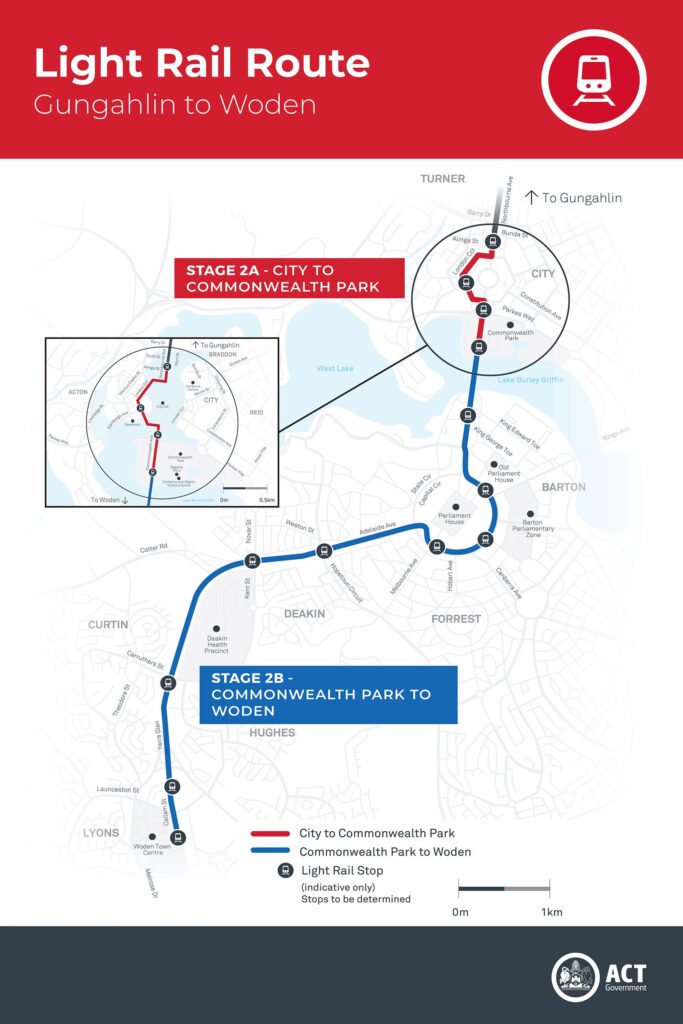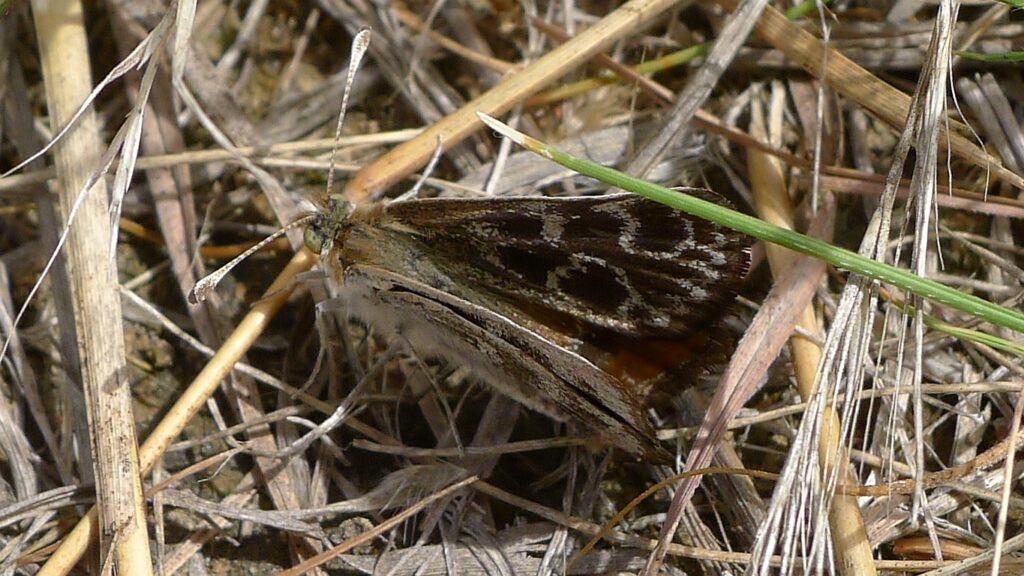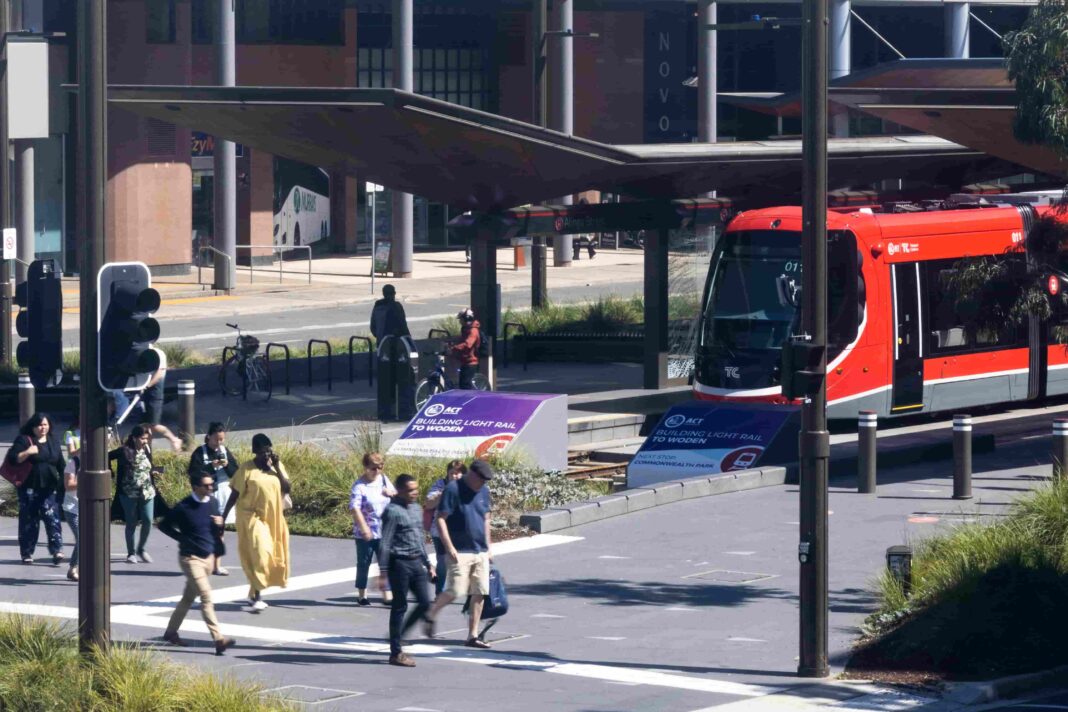Canberrans could ride the light rail from Gungahlin to Commonwealth Park as early as 2024, the ACT Government believes.
The Federal Government this week gave environmental approval to Stage 2A of the light rail, a 1.7km extension from Alinga Street to Commonwealth Park.
The project was considered a controlled action under the Environment Protection and Biodiversity Conservation Act 1999, requiring federal Environment Minister Sussan Ley to assess the approval.
ACT Chief Minister Andrew Barr and Minister for Transport Chris Steel welcomed the news. “This long-awaited approval is a very important milestone for the project,” Mr Barr said.
“We hope that people will be able to start taking light rail in this term of government to Commonwealth Park,” Mr Steel said.

The light rail network will eventually connect all of the ACT, from Gungahlin to Tuggeranong, and out to Belconnen, Fyshwick and the airport.
The ACT’s high level of car dependency is unsustainable, the Government believes. Almost 75% of working Canberrans already travel by car; ACT’s population is expected to reach 620,000 by 2046, and the number of car trips in Canberra to grow by more than 400,000.
The Government predicts this will cause a congested road network with noise pollution and slower travel times – whereas smart public transport like light rail and electric buses will make Canberra one of the world’s most liveable and competitive cities.
“Light rail is central to delivering Canberra’s integrated transport network to meet future population growth and support a sustainable and liveable city for all Canberrans,” Mr Steel said.
Almost 14,000 people are expected to use light rail by 2026, and 23,000 by 2046. Mr Steel believes that the light rail is already changing Canberrans’ behaviour: 43% of light rail users had never used public transport in Canberra before, while more than 1 million people caught light rail in the first three months of operation in 2019 (some attracted by the novelty).
The all-renewable electric light rail will also lower transport emissions (more than 60% of ACT greenhouse gas).
The first stage of light rail – a 12km line from Gungahlin to Civic – opened in April 2019. The second stage is in two phases.
Stage 2A will connect the courts precinct, the Australian National University, and the businesses and hotels in the centre of town; it will stop at City West (near Edinburgh Terrace), City South (near a new intersection of London Circuit and Commonwealth Avenue), and Commonwealth Park (just before the bridge).

Stage 2B will run from Commonwealth Park to Woden. Because it passes through the Parliamentary Triangle, it will require approval from both houses of parliament, Mr Steel said. Obtaining heritage and environmental assessments could take 18 months.
“This is one of the most complex approvals processes for a major infrastructure project in the nation,” Mr Steel said.
The ACT Government still needs planning approval from the National Capital Authority (NCA) and the ACT Planning and Land Authority before work can begin. Mr Barr said the Government had set aside funding in its forward infrastructure program for stage 2A; procurement details would be released in coming weeks and months.
The Canberra Liberals were pleased the project had received the relevant environmental approvals, but called on the Government to reveal the true cost and timeline for the project.
“This Government has a proven track record of budget blowouts and broken promises, so it’s important everyone gets a clear understanding of what the Government’s proposing to do,” Mark Parton, Shadow Minister for Transport, said.
Some environmental groups have raised concerns the light rail would threaten the critically endangered golden sun moth (Synemon plana). A total of 4.76 hectares of low-quality habitat will be cleared; the Government has promised to restore habitat on nearby sites, and to buy and retire 82 species biodiversity credits in accordance with the NSW Biodiversity Offsets Scheme.

The National Trust (ACT) was still concerned the approval had not adequately addressed all the heritage issues. President Gary Kent said a suitable offset site for the golden sun moth had yet to be confirmed, and sites were becoming increasingly difficult to find.
Mr Kent said the approval also assumed that Stage 2B would be approved (otherwise 2A may be in the wrong place) – but issues still had to be adequately considered, including crossing the lake, passing through the Parliamentary Triangle, and the route down Commonwealth Avenue.
“We will raise these issues with the ACT Government and the NCA before their final approvals are given,” he said.
“We remain concerned that the assessment of Stage 2B will be by way of environmental impact study, rather than an independent public inquiry, given the significant issues involved with that route.”
Friends of Grasslands, a community group dedicated to the conservation of natural temperate grassy ecosystems in south-eastern Australia, was concerned that offsets might not be effective, but could instead result in a loss of biodiversity.
President Geoff Robertson noted that this would be the first time the ACT Government had proposed offsets via the NSW BOS.
He wanted the ACT Government’s Offsets Register to include information about the golden sun moth offset credits to show the credits would ensure no net loss of golden sun moth across the landscape.
For more news:



